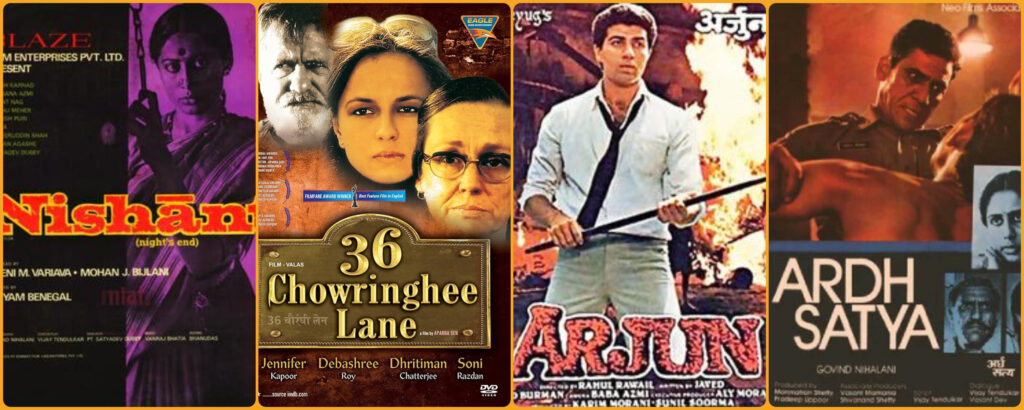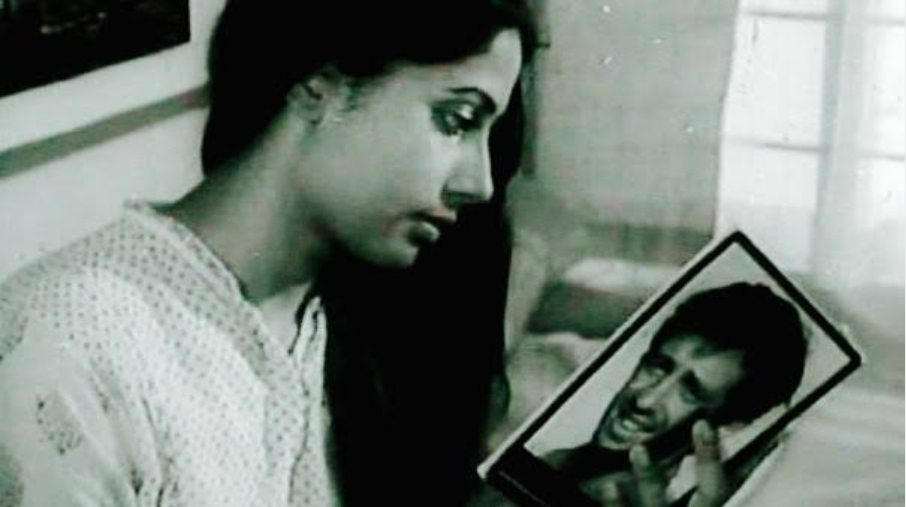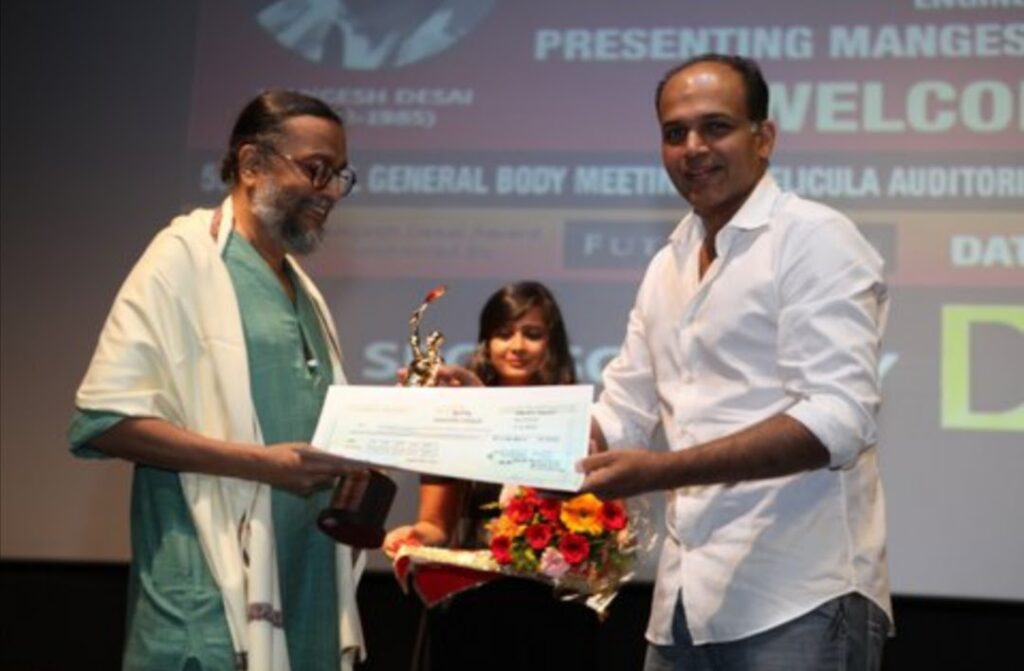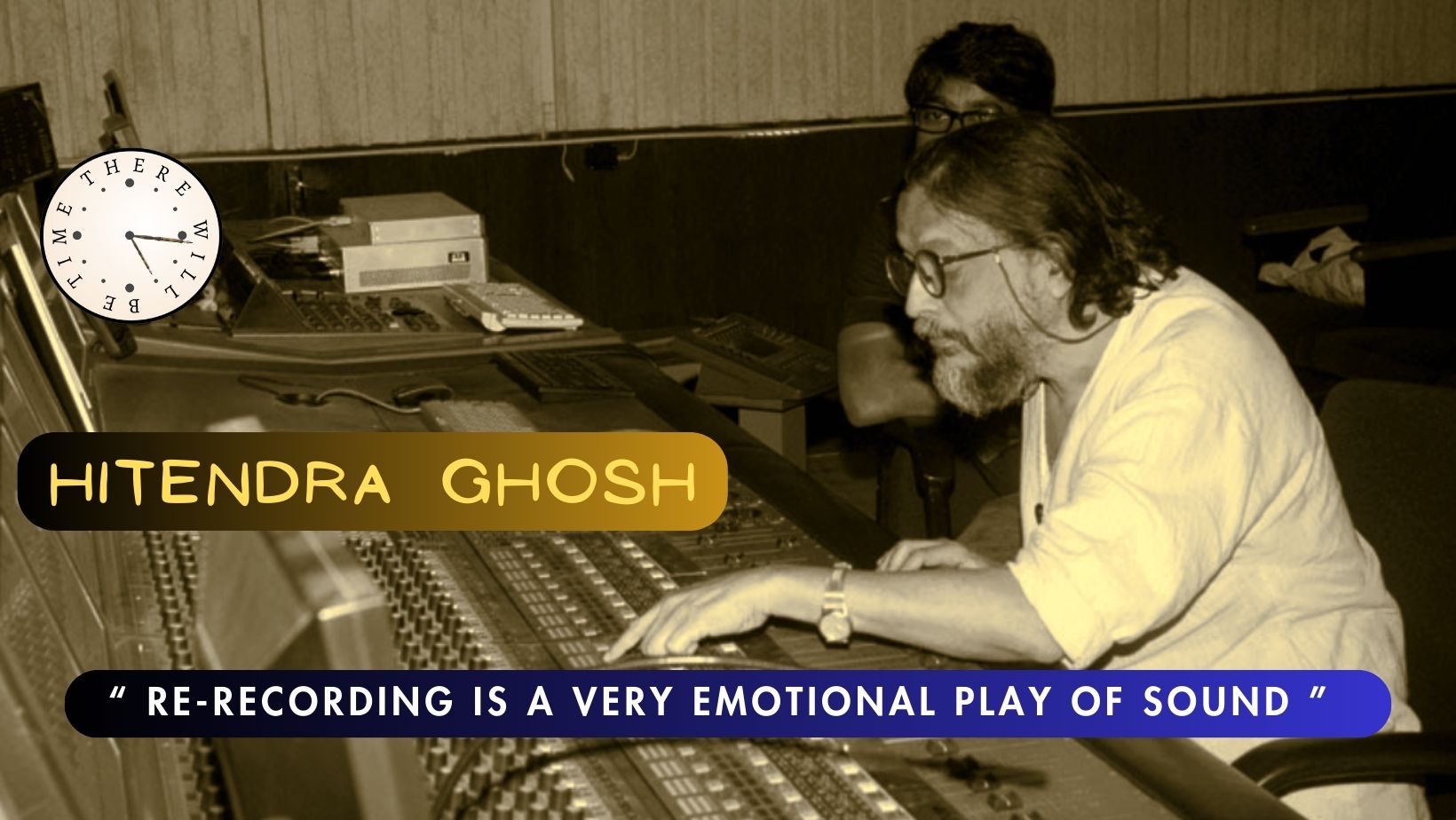Allow me to start by telling sorry to my readers.
It’s been quite some time since I did my last blog, with Sham Kaushal – although it seems you guys have kept reading my pieces, since the traffic to my blog has been remarkably steady. Thanks for the support.
Life kept me busy with other things. I did a couple of Netflix projects, relocated to Mumbai from Delhi, and settled down here.
Somewhere I always knew, if and when I make a comeback to blogging, it will have something to do with the world of sound. That’s what excites me the most. And for heaven’s sake, now I am in Maya Nagari Mumbai. If I don’t resume writing these pieces while I am here, then I might as well stop paying Bluehost and let my blog wither away by itself.
Either that, or get going. That’s that.
With a firm push from my friend Sound Designer Tapas Nayak, I got the chance to meet Hitendra Ghosh, the re-recording maestro. He is an icon, the behind-the-scenes sound man of every Shyam Benegal film since Nishant (1975), every Govind Nihalani film, and the last three films of Satyajit Ray. It was nothing less than a lifetime dream come true.

More so because this legend who has worked in more than 3700 films still comes to the studio every day, that too with something that is more than a pacemaker pumping his heart – a device that has been there for more than 20 years.
That’s loving to stay alive. But more about that later.
Let’s first start with how coming to the world of films was an accidental afterthought for Hiten Ghosh – one that emerged out of pure and persuasive ‘boredom’.
Young Hiten realized he didn’t have the mindset of a sarkari naukar. For most Indian job-seekers during the early 70’s, that was a plum position in a plush department.
But Hiten decided to give it a pass.
Here, to understand him and his decisions better, let me tell you a bit about his origins.
I feel he inherited his creative impulses from his parents.
Hiten’s parents studied at Shantiniketan, as direct disciples of Rabindranath Tagore. His mother learnt music, and his father did arts. They were teachers at the Gwalior Schindhia School, from where Hiten did his entire schooling.
But both his parents died early.
Maharaja Schindhia sponsored his school education and after that, five years of Engineering. Once Hiten completed his schooling, the Maharaja funded him by making him a secretary at his office.
His job there? Naah, let me get Hiten to tell you that.
When young Hiten decided to apply to a Sound Engineering and Recording course at the Film and Television Institute of India, his family and well-wishers were (obviously) scandalized. Doing five years of Engineering, getting a steady and plum government job, and then relapsing into uncertainty again? Who does that?
Hiten explained to them, that since he has no other responsibilities to fulfil – he could pursue his dreams. To quote him, he said ‘I am the only one who can do it – because I have to support myself only. I didn’t need to support anyone else.’
That he did. During his stint with the Film Institute, Pune, he started funding his studies by doing private tuitions in nearby housing societies. But then, there arrived a stroke of luck, from what could be called extremely unexpected quarters.
What happened was, in his first year, Hiten Ghosh was the Sports Secretary of FTII, and the only playground they had was about to vanish.
I felt Hiten was being humble when he ascribed his success to ‘lady luck’. I would rather say it was less of luck and more of his ability to take risks, and stick to those risky decisions. That is what made Hitendra Ghosh the person and the professional that he is today.
At least, for me, however brief might be my time-spent with him, he left that impression on me. His unique and outstanding experiences at the institute tells the story of a different Hiten Ghosh. His story is that of an observant, hard-working, razor-sharp fast learner, with an intuitive mind.
Hitendra’s time spent in FTII gave him all the impetus he needed to spend a lifetime in cinema, for cinema. The company was as good as it gets – Uday Shankar Pani, Anil Tejani, Shabana Azmi, Naseeruddin Shah, Om Puri, Tom Alter, Benjamin Gilani, and many others. An august batch of newcomers, and no doubt quite inspiring.
But yes, some might even say that the inspirations that he found beyond the institute were even more encouraging. That includes me.
Here’s why and how.
I have to admit, that end statement made me happy.
Though I am definitely not alone in this, Smita Patil has been a childhood crush. I spent my early teenage in a remote military cantonment in Assam during the early 80’s – where I remember watching her for the first time in films like ‘Namak Halaal’ and ‘Shakti’. That’s all I had access to in our mini cantonment theatre.
Even in those films, I was absolutely besotted by her.
I was introduced to the Smita Patil of ‘Manthan’ and ‘Arth’ and ‘Mandi’ and ‘Mirch Masala’ much later, during and after my Film Appreciation course at Calcutta University in the early nineties.
To find out now, after so many years, that I am speaking to someone who might be responsible for her first sliver-screen appearance is such a warm and quizzical feeling – I really can’t explain. I won’t even try.
Let me just say that such happy accidents make life worth living.
And for anyone who is interested, I found an interesting write-up on Teevra Madhyam.

Anyways, back to the man of the moment.
Hitendra Ghosh claims that his ‘lucky’ spell continued even after he completed his final exams at the institute. Personally, I feel it was his uncompromising hard work and never-say-die approach that helped him reach the pinnacles of success. And this ‘attitude’ started early.
Some people just don’t like to brag about themselves and let their work do all the talking.
I like them.
Immediately after this, Hiten landed ‘Nishant’ with Shyam Benegal. That’s a plum pick and a robust start of career – and the way it happened is also a story in itself.
But for now, I would call it a day here.
Hiten has described in detail why he decided to go for just ‘sound mixing’ even while being at the top of his game as a successful Sound Engineer. He has compared the ‘sound’ expectations and working styles of Shyam Benegal and Satyajit Ray, from an inside view perspective. He has shared untold stories about the BGM of Jodha Akbar, and some musical adventures of Ashutosh Gowarikar. He has spoken at length about his own aesthetics of sound and the craft and philosophy of re-recording.
There’s still a lot to come, but give me a week to organize it. 3500 films in 50 years are a bit too much to handle at one go.
And do comment. Please encourage me, or damn me if you feel like.
I need both, to keep going.



Be First to Comment